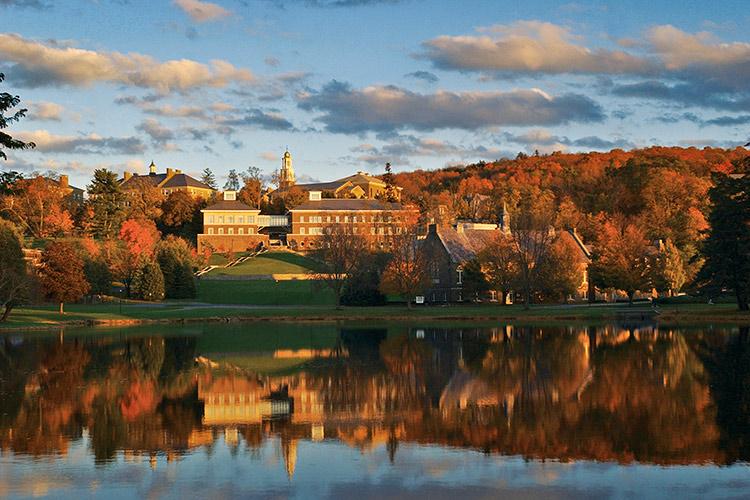Many of Colgate University’s most recognizable traditions have long included a symbolic torchlit walk, representing the force of the light of knowledge. For generations, during the university’s annual Founders’ Day ceremony, Konosioni Senior Honors Society members led first-year students up the hill by firelight. The night before commencement, seniors have processed back down the hill, carrying torches of their own.
Following the recent events in Charlottesville, Va., where extremist groups marched across the University of Virginia campus carrying torches and violent clashes left three people dead and others injured, the university community has decided to pause its use of torches for its 2017 Founders’ Day celebration. The faculty and students are working together to incorporate candles and light into the ceremony. The university community has also undertaken an effort to look forward to consider its most important rituals and ceremonies, and reaffirm the symbol of the torch and light as a representation of knowledge and enlightenment. With the assistance of installation artist Barnaby Evans, who will be an artist-in-residence during the 2017–2018 academic year, the university will engage in a comprehensive approach to renew its opening and closing rituals and ceremonies.
Colgate’s seal prominently features the torch of knowledge and that will not change. Today, that symbol has been appropriated by extremist groups. For years, the Colgate community has debated the appropriate use of the torch, and now must consider bold and beautiful ways to reclaim it. This artistic partnership, which will include the Board of Trustees, the Alumni Council and other members of the alumni community, marks the beginning of a thoughtful process and movement forward.
“I personally cannot imagine making any changes to campus rituals without engaging in some form of deliberative and creative process: one that takes into account the many perspectives and thoughts of members of our community and one that explores both the history and the modern intent of our university ceremonies and the symbolism used within them,” said University President Brian W. Casey in a statement to campus. “I have asked Barnaby Evans to come to Colgate to join our conversations and to work alongside us as we re-invest in our opening and commencement rituals in ways that honor and understand our past while looking forward to the future.”
The installation for which Mr. Evans is best known is WaterFire, which he created for the downtown riverfront parks in Providence, R.I. This installation, first launched 23 years ago, has now been presented more than 300 times at the request of the community. WaterFire is a remarkable, evolving work of art and it has had an extraordinary impact upon the city, transforming downtown Providence, and attracting visitors from around the world. Learn more about Mr. Evans and his work here.
Colgate will tap into the power of its academic environment, its values, and Evans’ knowledge of the symbol and ceremony to enhance the university’s traditions— to find new ways of expressing and recommitting ourselves to the traditional sentiments of enlightenment, knowledge, and community that have served as a rallying point for generations of students. The process will engage students, faculty, staff, and alumni through the course of this academic year.
“In our work on this project, I hope we see the deepest values of Colgate coming to the fore,” Casey said. “At the heart of our university is our responsibility to be an educational institution. Our method is to be a collegial community of scholars and learners, working together across disciplines in our shared commitment to excellence and thoughtful engagement. This is the way we will approach the question of how best to shape our ceremonies — drawing on the knowledge, experiences and perspectives of the members of the Colgate community as we create Colgate’s future.”
